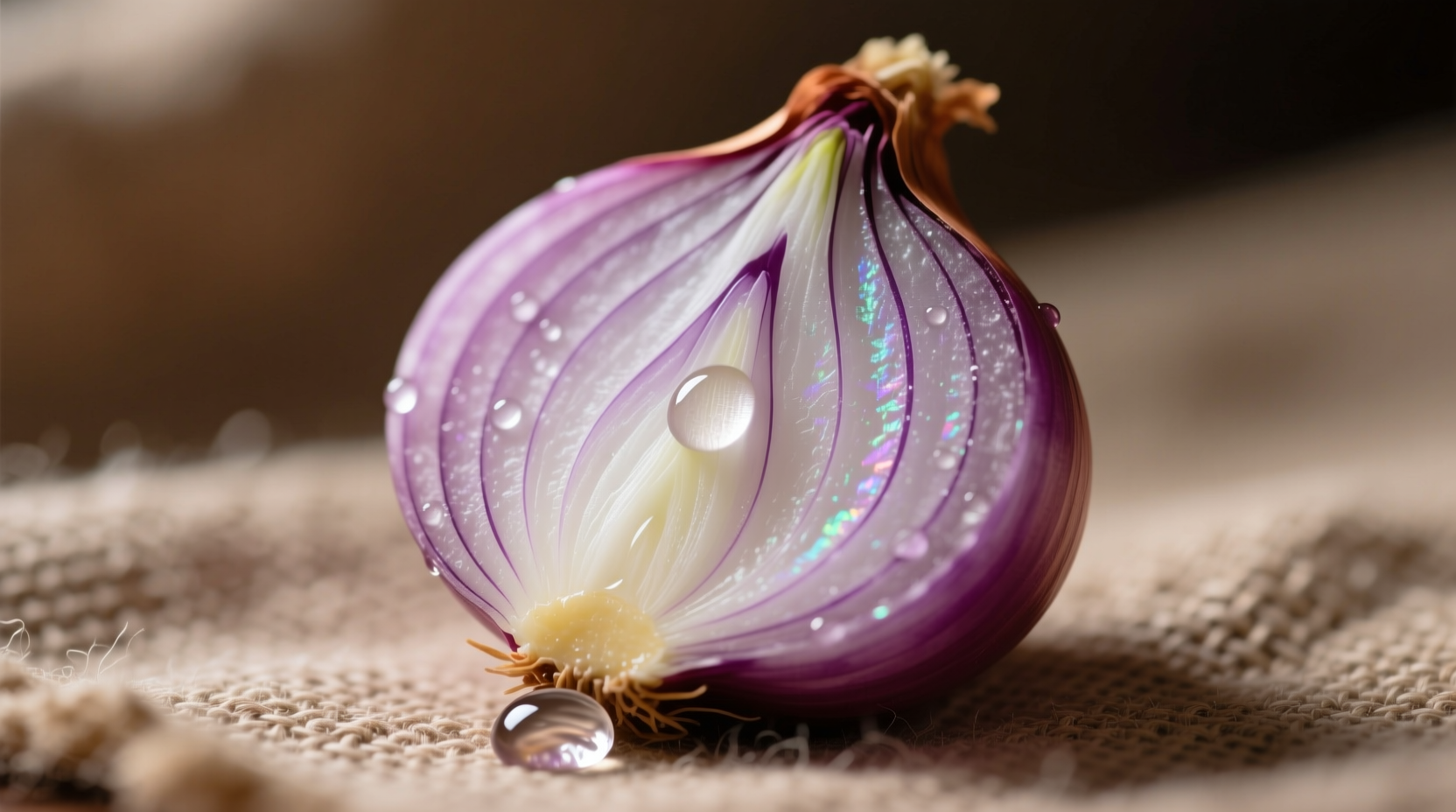When you're standing in the produce aisle trying to identify shallots among the onions, knowing exactly what to look for saves time and prevents recipe mistakes. This visual guide gives you everything needed to confidently select and use shallots in your cooking.
What Does a Shallot Look Like? Your Visual Reference Guide
Understanding the physical characteristics of shallots helps you distinguish them from regular onions at a glance. The most reliable visual markers include:
- Shape: Elongated and tapered, not perfectly round like yellow onions
- Size: Typically smaller than cooking onions, about 1.5-2.5 inches long
- Skin color: Coppery-brown, reddish-purple, or grayish (depending on variety)
- Internal structure: Divided into cloves like garlic, not concentric layers
- Root end: Often has a distinctive netted appearance

Shallot vs. Onion: Key Visual Differences
Many home cooks confuse shallots with small onions, but several distinct characteristics set them apart. This comparison helps prevent common identification errors:
| Feature | Shallot | Regular Onion |
|---|---|---|
| Shape | Elongated, tapered | Rounded, bulbous |
| Internal Structure | Multiple cloves (like garlic) | Concentric rings |
| Skin Texture | Thin, papery with netted appearance | Thicker, smoother papery skin |
| Flavor Profile | Milder, sweeter, more complex | Stronger, sharper |
| Typical Use | Vinaigrettes, delicate sauces, raw applications | Soups, stews, roasting, caramelizing |
Practical Identification Tips for Grocery Shopping
When selecting shallots at your local market, focus on these practical identification markers that work in real shopping situations:
What to Look For
- Firmness: Should feel solid with no soft spots or sprouting
- Dry skin: Avoid shallots with damp or moldy skin
- Weight: Should feel heavy for their size, indicating freshness
- Size consistency: Choose similar-sized shallots for even cooking
Common Mistakes to Avoid
- Mistaking small pearl onions for shallots (pearl onions grow as single bulbs)
- Confusing red onions with French gray shallots (red onions have concentric rings)
- Selecting sprouted shallots (sprouting indicates age and reduced flavor quality)
Understanding Shallot Varieties and Their Visual Characteristics
Not all shallots look identical. Different varieties have distinctive appearances that affect both their visual identification and culinary uses:
Common Shallot Types You'll Encounter
- French Gray (Grisey): Elongated shape with grayish-purple skin, considered the most flavorful variety
- Echalion: Larger, rounder shape with coppery-brown skin, often labeled as "eschalot"
- Red Shallot: Vibrant reddish-purple skin, milder flavor, excellent for raw applications
- Jersey: Small, round with coppery skin, commonly found in US markets
According to agricultural research from the University of California Cooperative Extension, shallots (Allium ascalonicum) have been cultivated for over 5,000 years, with historical records showing their use in ancient Egyptian and Indian civilizations. This long cultivation history has resulted in numerous regional varieties with distinct visual characteristics.
When to Use Shallots vs. Regular Onions
Understanding the practical applications helps determine when you specifically need shallots rather than substituting regular onions:
- Raw applications: Shallots' milder flavor works better in vinaigrettes and salsas without overwhelming other ingredients
- Delicate sauces: Their complex flavor enhances reductions without the sharpness of regular onions
- Finishing dishes: Minced shallots added at the end provide subtle flavor without cooking bitterness
- Specialty recipes: French cuisine classics like beurre blanc specifically require shallots for authentic flavor
Food science research from the Journal of Agricultural and Food Chemistry confirms that shallots contain different proportions of sulfur compounds than regular onions, explaining their distinctive milder yet more complex flavor profile that makes them preferable in certain culinary applications.
Storage and Shelf Life Guidance
Proper storage maintains both the appearance and quality of shallots:
- Store in a cool, dark, well-ventilated place (not the refrigerator)
- Keep away from potatoes which emit gases that accelerate spoilage
- Properly stored shallots last 1-2 months (longer than most onions)
- Do not wash before storage as moisture promotes mold growth
When stored correctly, shallots maintain their distinctive appearance and flavor characteristics much longer than many cooks realize, making them a valuable pantry staple for elevating everyday cooking.
Frequently Asked Questions
Can I substitute regular onions for shallots in recipes?
Yes, but with adjustments. Use about half the amount of regular onion compared to shallots, as they have a stronger flavor. For raw applications like vinaigrettes, shallots are preferable as regular onions can be too sharp. In cooked dishes, yellow onions work as substitutes but won't provide the same nuanced flavor.
Why do some recipes specifically call for shallots instead of onions?
Recipes specify shallots when a milder, more complex flavor is needed. Shallots contain different sulfur compounds than regular onions, resulting in a flavor that's less harsh when raw and more nuanced when cooked. They're particularly important in French cuisine and delicate sauces where onion flavor would overpower other ingredients.
How can I tell if a shallot has gone bad?
Signs of spoiled shallots include soft or mushy spots, visible mold, dark patches on the skin, or a sour smell. Fresh shallots should feel firm with dry, papery skin. If the cloves have separated significantly or feel slimy inside, they've spoiled and should be discarded.
Are pickling onions the same as shallots?
No, pickling onions and shallots are different. Pickling onions are small regular onions grown specifically for pickling, with concentric layers like larger onions. Shallots have a completely different internal structure with multiple cloves. While both can be used for pickling, they have distinct flavors and appearances that affect the final product.











 浙公网安备
33010002000092号
浙公网安备
33010002000092号 浙B2-20120091-4
浙B2-20120091-4